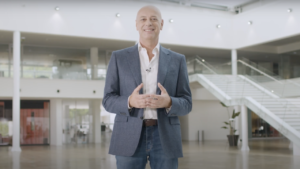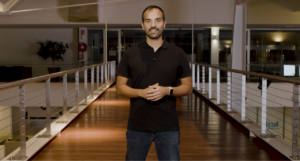At its NextStep event, OutSystems announced what its CEO Paulo Rosado called the “most ambitious technology platform launch” in its history.
Dubbed Project Neo (for now), the new cloud application platform represents a major architectural advance from the company’s historical approach to low-code application development.
Built from the ground up on a cloud-native architecture, the company explains that it designed the platform to enable enterprise organizations to build applications that can compete with those from elite software-centric businesses — something that the company says may be impossible otherwise.
During the launch, Rosado stated that the new platform, which will be released in early 2022 and is available in preview now, is ultimately about fulfilling its long-held vision. “OutSystems is all about powering your innovation,” he said. “Our mission is to enable every organization to innovate through software. This translates into a simple product strategy: serious productivity for serious apps.”
 In his and the company’s view, enterprises are now competing with elite software companies on numerous fronts — and these competitors are releasing software on a continual basis and responding to market demands in hours or days rather than months and years.
In his and the company’s view, enterprises are now competing with elite software companies on numerous fronts — and these competitors are releasing software on a continual basis and responding to market demands in hours or days rather than months and years.
That means that competing with them requires that enterprises must do the same. But that’s something that has been largely out of reach.
Why Cloud-Native is Critical for Enterprise Development
In the company’s vision, what’s holding enterprises back from effectively competing comes down to two things: technical debt and the complexity of cloud-native architectures.
Rosado stated that technical debt — the financial and resource cost to maintain existing technologies — consumes at least 30-40% of the typical IT budget. As a consequence, it inhibits an organization’s ability to adapt and respond to market shifts and competitive threats.
“Technical debt is real,” said Rosado. “And it is defining a system of work built on developers fighting the degradation of old software, versus giving developers the space to work on inventing what’s needed next.”
This inability to cut through their technical debt is the first challenge inhibiting organizations from competing effectively. To attempt to overcome this technical debt, enterprises are looking to cloud-native architectures, only to find that their inherent complexity takes them even further from their objective.
According to Gonçalo Gaiolas, OutSystems VP of Product, it’s a problem with significant consequences. “It’s an explosion of platforms, components, frameworks, tools, and, ultimately, complexity that distracts you from focusing on what matters: your customers,” he explained at NextStep.
But amid the complexity, the company sees an opportunity to help its clients find competitive footing. “We are proud to unveil this new platform, designed to give every company in the world access to what it needs to transform into an elite software development company,” Gaiolas stated.
The Modern App Development Challenge
While the company put forth a compelling vision for enterprises seeking to compete in a digital-first world, its ability to execute on it will come down to addressing the real day-to-day challenges facing enterprise developers.
It’s a challenge not lost on enterprise development teams.
“Today, great software innovators release multiple times a day,” said Rosado. “So, the pressure is ratcheting up for software teams to build faster, to build more resilient software, and to anticipate change.”
While there is plenty of appetite for these new approaches to development within enterprise ranks, the road between the current state and this new cloud-first development ethos is littered with failed attempts and projects gone awry.
 Enterprise development teams want to adopt modern technologies, but struggle to deal with their complexity and to make it work in the context of their current architectures. ““Modern cloud app development is both inspiring, because of the possibilities, yet also incredibly stressful because of the immense complexity and risk,” said Gaiolas. “Teams have to grapple with thousands of services, each with varying degrees of maturity and complexity.”
Enterprise development teams want to adopt modern technologies, but struggle to deal with their complexity and to make it work in the context of their current architectures. ““Modern cloud app development is both inspiring, because of the possibilities, yet also incredibly stressful because of the immense complexity and risk,” said Gaiolas. “Teams have to grapple with thousands of services, each with varying degrees of maturity and complexity.”
The net result for most enterprise development teams is lost productivity no matter which path they take. If they try to ignore modern cloud-native approaches they spend all their time continually trying to make legacy systems act in ways for which they were not designed. But if they dive into the modern cloud application development approaches, they end up spinning in circles lacking the resources and expertise to realize their benefits.
In this conundrum, OutSystems sees an opportunity to help developers reclaim and accelerate their productivity without having to sacrifice the power of the apps they are developing. To do so, however, the company realized that it would need to take a fresh approach to its platform. So, Gaiolas explained, they “embarked on a massive effort to rethink developer productivity from the ground up.”
The Intellyx Take: Rewiring the Enterprise for the Cloud
The fundamental challenge that enterprise leaders and their development teams face is that adapting to development on the cloud — to the degree necessary to compete with digital natives — requires a rethinking of the top-to-bottom development methodology and the adoption of whole new sets of tools.
“One of the most challenging aspects to cloud development is that you need to rewire your thinking to deal with cloud’s inherently non-deterministic nature,” explained OutSystems CTO, Patrick Jean, speaking at the event. “On top of all this, you’re making a long-term bet on a set of technologies — and more than likely one of these will be outdated by the end of the development project.”
It represents a feat that is out of reach for most enterprises that simply do not have the resources to deal with this much of a shift. The company’s philosophy, as realized in this new release, is to make that shift for its clients by providing an application development environment sitting on top of a pre-built, cloud-native architecture — enabling them to compete with their cloud-first competitors.
It’s an approach that seeks to balance the capabilities that enterprises need, while abstracting away the inherent complexity. “We didn’t sacrifice power for complexity,” continued Jean. “We’ve approached reaching cloud scale with the same philosophy we designed into our low-code platform: incredible power but with a fraction of the complexity.”
The new platform will stand alongside the company’s existing and well respected offering, OutSystems 11. The company says it will continue to invest in its existing platform, offering its clients the choice of cloud-native, multi-cloud, or on-prem approaches.
If the combination of this is new platform and this hybrid approach delivers on its promise, it has the potential to reshape the development landscape for enterprises — providing all of the competitive upside of cloud-native architectures without the massive costs, risks, or learning curve. And if it does so, perhaps it will reinvigorate development teams in the process.
“Project Neo is designed from the ground up to help you achieve modern architectures without the nightmares and to build internet-scale applications that run completely cloud native out-of-the box,” proclaimed Gaiolas. “[Its’] a platform that lets developers reclaim their time to dream, build, create, and innovate.”
Copyright © Intellyx LLC. OutSystems is an Intellyx client. Intellyx retains full editorial control over the content of this paper.



